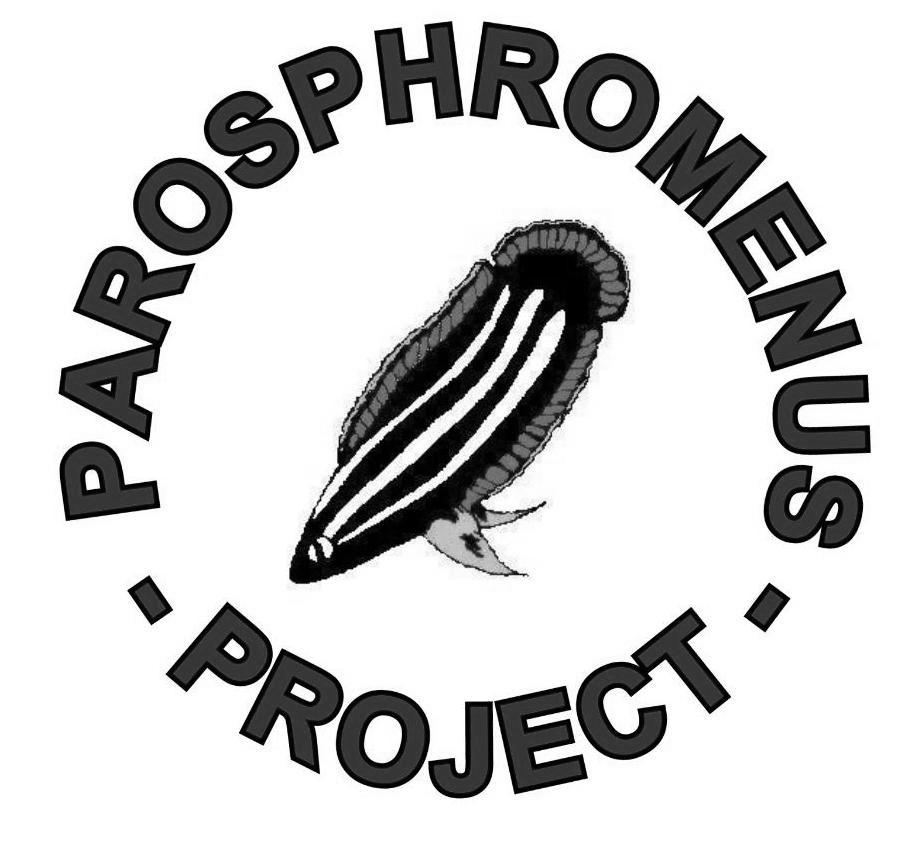Autumn Census 2014 Parosphromenus-Project 
Commentation of synopsis and godfathers
Kommentar der Synopse und Paten
commentation du synopsis et des parrains
Commentation of synopsis and godfathers (by Benjamin Wilden)
Translated to english by Dorothee Jöllenbeck-Pfeffel (revised by Helene Schoubye)
General remarks:
In this year´s autumn Census 37 persons.have taken part
Two of them have been reports of having ‚no fish’.
This is an overall low level of participation.
It should be noted, that in the spring Census we had 13 reports of having ‚no fish’ (of 57 participants).
In addition to this, I wasn’t able this time to send as many reminding emails as last year to individual members.
All species are still in stock, but in a very different distribution.
In comparison with the spring census, there should not be much changed, if we assume that the stock of the participants who took part in spring but didn’t participate now, isn’t modified much now,
Examples of this are P.filamentosus and in particular its variation sp.Ampah.
Specially P.deissneri, P.sumatranus, P.gunavani, P.allani and P.parvulus are again weak in numbers. Additional there are the species of P.rubimontis and P.opallios which is only represented by a few animals and few breeders.
Again in a good condition is the stock of P.bintan, P.filamentosus, P.linkei, P.nagyi, P.quindecim and P.tweedie.
A very important event for us has of course been the import of P.phoenicurus. This species can be considered as secured in stock for the moment.
Concerning the godfathers, I have marked as usual the not participants with (?) and the new engaged with (NEW).
I think it goes without saying that specially those friends who are the only persons who maintain a species or a variety, have a special responsibility for the continued existence of the species or variety and don´t need to be nominated explicitly as godfathers (unless they have been already the godfathers).
Special remarks:
At this point I want to apologize for some mistakes I had made with the spring census.
There was a update of the mail system of the P.-P. coinciding with a change of the census layout made by me.
Also this time the layout has been a little bit adapted for a better readability.
If you find a mistake in spite of my controls, tell me and I will correct it.
Now I think the system runs and will not need any adaptions for the next census.
Further more I would like to once again say that it is very good to note all information which is available of your fish, – their origin, import, and how they have been recorded in earlier Census. Some participants have already done this in the present and in the previous Census, – and this enables us to track the fish better and in particular it enables us to see where the offspring is recorded and found.
There has been a discussion in the forum concerning this. This discussion centered around the question if we need to identify exactly our fish which comes to us via trade. It is without doubt very nice to be able to identify our fish excatly. In almost all cases this is also quite possible and it is an explicit condition for our Census. It should be possible for everybody to distinquish a P. deissneri from other parosphromenus species through the help of photos.
In this present Census I am not sure that this has been done by everybody. who reported deissneri.. I am however not able to evaluate this and change to another species according to what I might think.
I would therefore ask that you contact experts for identification for example in the forum, in particular if you have unidentified fish from trade.
On the other hand it is in particular also in these cases very important, that the information of trade and if possible also the date of purchase (year) of the fish is noted.
But with other species it may not be so easy. The P. bintan group is even for experts difficult. For this group information about origin and details of how and where they were purchased is important for classification and distinguishing, in order that completely different species, which has been traded under the same name, and identification should not later be mixed with others.
We would like to thank all of you who have taken part in the census.
20.12.2014
Benjamin Wilden, Paderborn, Germany

